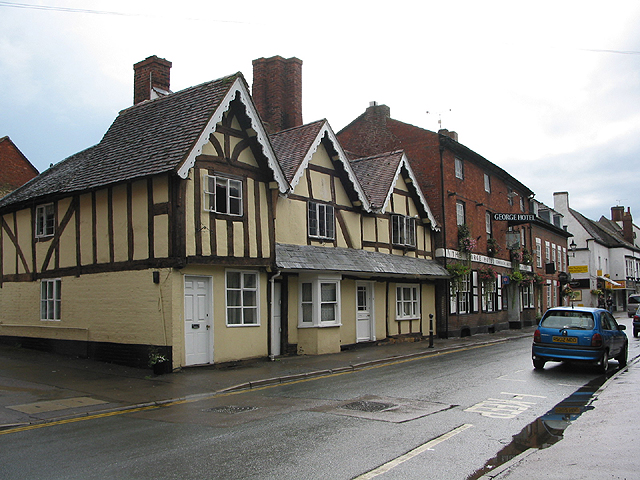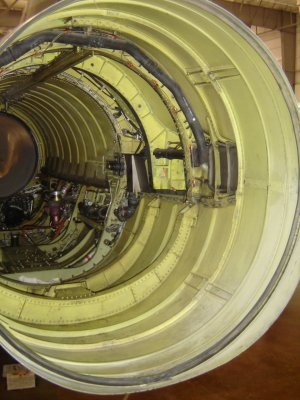|
Four Oaks Halt Railway Station
Four Oaks Halt was a request stop on the former Ledbury and Gloucester Railway. It was located 2 miles north of Newent Newent (; originally called "Noent") is a market town and civil parish about 10½ miles (17 km) north-west of Gloucester, England. Its population was 5,073 at the 2001 census, rising to 5,207 in 2011, The population was 6,777 at the 2021 Census. .... The station opened on 16 October 1937 and closed in 1959 when passenger services were withdrawn from the line. There was a simple wooden platform and shelter, built on the line of the lifted double track when it was singled. References Further reading * Disused railway stations in Gloucestershire Former Great Western Railway stations Railway stations in Great Britain opened in 1937 Railway stations in Great Britain closed in 1959 1937 establishments in England 1959 disestablishments in England {{Gloucestershire-struct-stub ... [...More Info...] [...Related Items...] OR: [Wikipedia] [Google] [Baidu] |
Ledbury And Gloucester Railway
The Ledbury and Gloucester Railway (also known as the Daffodil Line), was a railway line in Herefordshire and Gloucestershire, England, running between Ledbury and Gloucester. It opened in 1885 and closed in 1964. History Most of the line was built over the route of the southern section of the Herefordshire and Gloucestershire Canal, which had opened in 1798. Construction and opening After a period of financial struggle the canal was leased to the Great Western Railway (GWR) in 1863 and in 1881 work started on conversion to a railway. The railway was built by two companies, the Newent Railway and the Ross and Ledbury Railway. The line was inspected by Colonel F. H. Rich in July 1885 and opened on 27 July. It was operated by the GWR with which both of the smaller companies were amalgamated in 1892. Closure The line closed to passenger traffic in 1959, with the Dymock to Gloucester section remaining open to goods traffic until 1964. Route The line followed a south and then sout ... [...More Info...] [...Related Items...] OR: [Wikipedia] [Google] [Baidu] |
Newent
Newent (; originally called "Noent") is a market town and civil parish about 10½ miles (17 km) north-west of Gloucester, England. Its population was 5,073 at the 2001 census, rising to 5,207 in 2011, The population was 6,777 at the 2021 Census. Once a medieval market and fair town, its site had been settled at least since Roman times. The first written record of it appears in the 1086 Domesday Book. Etymology Noent, Newent's original name, may have meant "new place" in Celtic. It also may mean "new inn", referring to lodgings for travellers to Wales, according to John Leland (c. 1503–1552), who mentioned a house called ''New Inn'', later named ''The Boothall'', which provided lodging along the road to Wales. There was indeed such a house in Lewall Street, owned by members of the Richardson family in the late 18th and early 19th centuries. Lewall Street runs between High Street and Court Lane, north of Broad Street. Geography Newent is on the northern edge of the Forest of D ... [...More Info...] [...Related Items...] OR: [Wikipedia] [Google] [Baidu] |
Newent Railway Station
Newent railway station served the town of Newent in Gloucestershire, England. It opened on 27 July 1885 when the Newent Railway and the Ross and Ledbury Railway (with whom the Newent Railway had an end on connection at ) opened their lines making a connection between and Over Junction on the Gloucester and Dean Forest Railway. The station had two platforms on a passing loop, a goods shed to the west and several sidings, one of which was equipped with a 5 ton crane. The goods yard was able to accommodate live stock and a full range of goods. The station was host to a GWR camp coach in 1935, 1938 and 1939. The station closed for passengers on 13 July 1959, but the line remained open for freight traffic until 1964. It was located opposite what is now the Newent fire station. The buttresses of the Station Bridge can be seen intact on nearby Station Road. As of 2011 there was a proposal by the Herefordshire and Gloucestershire Canal Trust to reopen the 34 mile Herefordshire ... [...More Info...] [...Related Items...] OR: [Wikipedia] [Google] [Baidu] |
Dymock Railway Station
Dymock railway station was a stop on the former Ledbury and Gloucester Railway. It opened in 1885 and served the Gloucestershire village of Dymock Dymock is a village and civil parish in the Forest of Dean district of Gloucestershire, England, about four miles south of Ledbury. In 2014 the parish had an estimated population of 1,205. Dymock is the origin of the Dymock Red, a cider apple .... It was closed for passengers in 1959 but remained open for freight traffic until 1964 when the line was closed. References Further reading * Disused railway stations in Gloucestershire Former Great Western Railway stations Railway stations in Great Britain opened in 1885 Railway stations in Great Britain closed in 1959 Dymock {{Gloucestershire-struct-stub ... [...More Info...] [...Related Items...] OR: [Wikipedia] [Google] [Baidu] |
Great Western Railway
The Great Western Railway (GWR) was a British railway company that linked London with the southwest, west and West Midlands of England and most of Wales. It was founded in 1833, received its enabling Act of Parliament on 31 August 1835 and ran its first trains in 1838 with the initial route completed between London and Bristol in 1841. It was engineered by Isambard Kingdom Brunel, who chose a broad gauge of —later slightly widened to —but, from 1854, a series of amalgamations saw it also operate standard-gauge trains; the last broad-gauge services were operated in 1892. The GWR was the only company to keep its identity through the Railways Act 1921, which amalgamated it with the remaining independent railways within its territory, and it was finally merged at the end of 1947 when it was nationalised and became the Western Region of British Railways. The GWR was called by some "God's Wonderful Railway" and by others the "Great Way Round" but it was famed as the "Holiday ... [...More Info...] [...Related Items...] OR: [Wikipedia] [Google] [Baidu] |
Former Great Western Railway Stations
A former is an object, such as a template, gauge or cutting die, which is used to form something such as a boat's hull. Typically, a former gives shape to a structure that may have complex curvature. A former may become an integral part of the finished structure, as in an aircraft fuselage, or it may be removable, being using in the construction process and then discarded or re-used. Aircraft formers Formers are used in the construction of aircraft fuselage, of which a typical fuselage has a series from the nose to the empennage, typically perpendicular to the longitudinal axis of the aircraft. The primary purpose of formers is to establish the shape of the fuselage and reduce the column length of stringers to prevent instability. Formers are typically attached to longerons, which support the skin of the aircraft. The "former-and-longeron" technique (also called stations and stringers) was adopted from boat construction, and was typical of light aircraft built until the a ... [...More Info...] [...Related Items...] OR: [Wikipedia] [Google] [Baidu] |
Railway Stations In Great Britain Opened In 1937
Rail transport (also known as train transport) is a means of transport that transfers passengers and goods on wheeled vehicles running on rails, which are incorporated in tracks. In contrast to road transport, where the vehicles run on a prepared flat surface, rail vehicles (rolling stock) are directionally guided by the tracks on which they run. Tracks usually consist of steel rails, installed on sleepers (ties) set in ballast, on which the rolling stock, usually fitted with metal wheels, moves. Other variations are also possible, such as "slab track", in which the rails are fastened to a concrete foundation resting on a prepared subsurface. Rolling stock in a rail transport system generally encounters lower frictional resistance than rubber-tyred road vehicles, so passenger and freight cars (carriages and wagons) can be coupled into longer trains. The operation is carried out by a railway company, providing transport between train stations or freight customer faciliti ... [...More Info...] [...Related Items...] OR: [Wikipedia] [Google] [Baidu] |
Railway Stations In Great Britain Closed In 1959
Rail transport (also known as train transport) is a means of transport that transfers passengers and goods on wheeled vehicles running on rails, which are incorporated in tracks. In contrast to road transport, where the vehicles run on a prepared flat surface, rail vehicles ( rolling stock) are directionally guided by the tracks on which they run. Tracks usually consist of steel rails, installed on sleepers (ties) set in ballast, on which the rolling stock, usually fitted with metal wheels, moves. Other variations are also possible, such as "slab track", in which the rails are fastened to a concrete foundation resting on a prepared subsurface. Rolling stock in a rail transport system generally encounters lower frictional resistance than rubber-tyred road vehicles, so passenger and freight cars (carriages and wagons) can be coupled into longer trains. The operation is carried out by a railway company, providing transport between train stations or freight customer faci ... [...More Info...] [...Related Items...] OR: [Wikipedia] [Google] [Baidu] |
1937 Establishments In England
Events January * January 1 – Anastasio Somoza García becomes President of Nicaragua. * January 5 – Water levels begin to rise in the Ohio River in the United States, leading to the Ohio River flood of 1937, which continues into February, leaving 1 million people homeless and 385 people dead. * January 15 – Spanish Civil War: Second Battle of the Corunna Road ends inconclusively. * January 20 – Second inauguration of Franklin D. Roosevelt: Franklin D. Roosevelt is sworn in for a second term as President of the United States. This is the first time that the United States presidential inauguration occurs on this date; the change is due to the ratification in 1933 of the Twentieth Amendment to the United States Constitution. * January 23 – Moscow Trials: Trial of the Anti-Soviet Trotskyist Center – In the Soviet Union 17 leading Communists go on trial, accused of participating in a plot led by Leon Trotsky to overthrow Joseph Stalin's regime, and assas ... [...More Info...] [...Related Items...] OR: [Wikipedia] [Google] [Baidu] |






